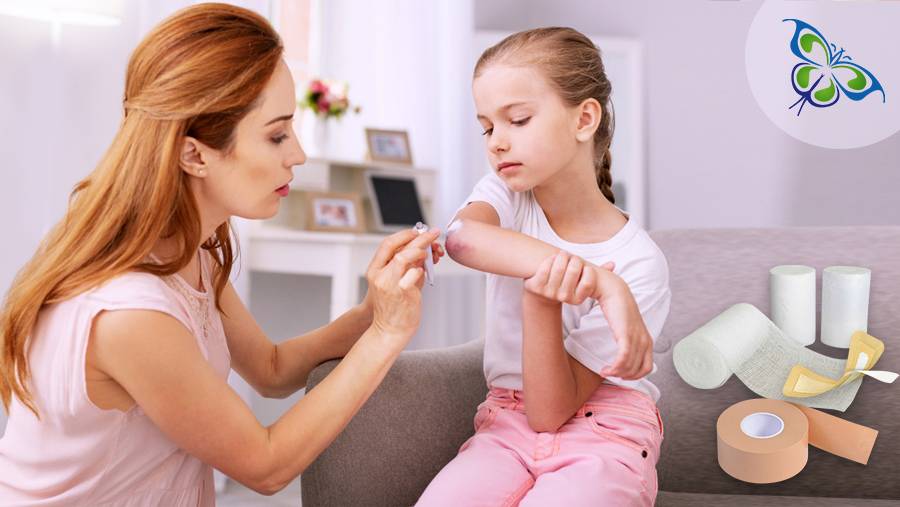
Hello
Select Address

Emergencies can come up anywhere and every medical personnel should be well-equipped to handle the situation. Here is a list of few things that come in handy when a medical emergency arises:
1. Cotton Rolls and Ball
Cotton Rolls and Cotton balls are the linchpins of wound care management. They are made of 100% pure cotton and are used everywhere – clinics, hospitals, nursing homes, dispensaries. Cotton rolls and cotton balls are highly absorbent and are used to cover the wound and prevent exposure to airborne infection and contamination. They are used to debride the wound before dressing and sanitize it with alcohol. A cotton ball is also used to apply ointments.
2. Adhesive Bandages
Adhesive bandages are flexible and stretchable bandages to cover cleaned wounds for protection. The main objective is to prevent bleeding and exposure to dirt and bacteria. Adhesive bandages are self-care wound supply and one can apply it without the help of medical personnel. There are different types of bandages, plastic, and fabric. The plastic bandages are more expensive as they are waterproof and oilproof. The fabric bandages are more comfortable and are the basic part of first-aid kits in every home. From abrasions to cuts they are useful and easy-to-use.
3. Medical Gloves
Medical gloves are worn as a protective layer to prevent any kind of contamination. Their main function is to control infection. When dealing with wounds and body fluids like blood or any kind of secretion, gloves are a must-have. Medical gloves come in three different materials: Nitrile, Latex, and Vinyl. In the medical field, the most popular is the nitrile ones and are FDA approved. Gloves can be sterile or non-sterile. The sterile gloves meet the standards of sterilization according to the FDA. They are free from micro-organisms and are preferred for surgical procedures. Non-sterile are only used for examination procedures.
4. Dressing
Dressings are kind of woven bandages without adhesive and do the job of a cotton ball. As dressing cannot hold itself around a wound, bandages are required to hold it. The main objective is to absorb blood and fluids and help in the process of healing. The dressing is of varied types depending upon the wound being treated:
• for burns, inflamed and infectious wounds and ulcers
• Hydrogel dressing for dry wounds to provide moisture and promote healing.
• Alginate dressing is made of biodegradable material derived from seaweed. They have high absorption capacity and are meant to absorb wound drainage.
5. Obstetrical Kit
Obstetrical kits are made for prenatal and postpartum situations. There are two types, a complete kit and a disposable one. The disposable kits are, particularly for single-time use. The contents have all the essentials to carry out a proper healthy delivery: Sterile gloves, Disposable scalpel, Maternity pad, sterile gauze, Disposable bulb syringe, Twist ties, Umbilical clamps. Several deaths of women and children are recorded every year during childbirth or after, the main reason being a little delay to begin the delivery procedure. Timing is critical and this is the reason that every medical personnel must have an Emergency OB kit.
6. Scissors and Sutures
Scissors are the most overlooked item when discussing emergencies. However, they are the most used items in a lot of medical situations. They are very useful for cutting bandages to appropriate sizes and for removing them. Not just for medical personnel, scissors are essential in first-aid boxes. Medical sutures are thread-like substances used to sew large wounds. The main purpose is to hold together incisions so that the wound fuse together leaving nothing but a light scar. They come in two variants – absorbable suture that dissolves with time and merges with the skin and the other, non-absorbable suture that requires removal from the body after the wound has healed.
7. Casting pad and casting tape
For emergency fracture situations, if the plaster is not immediately available, casting pads secure and firmly hold the fractured area. A person with a hairline fracture can stay with a casting pad for a day before getting plastered. The casting pad serves as a cushion between the plaster and the skin. It protects the skin from irritation and allows the skin to breathe. A casting tape holds the casting pad in place so that it does not slip inside a plaster.
Other than the general wound care supplies, medical personnel should also carry basic ointments and medicines for minor health disorders like fever, or bruises. Rubbing alcohol should be present to sterilize any medical equipment.